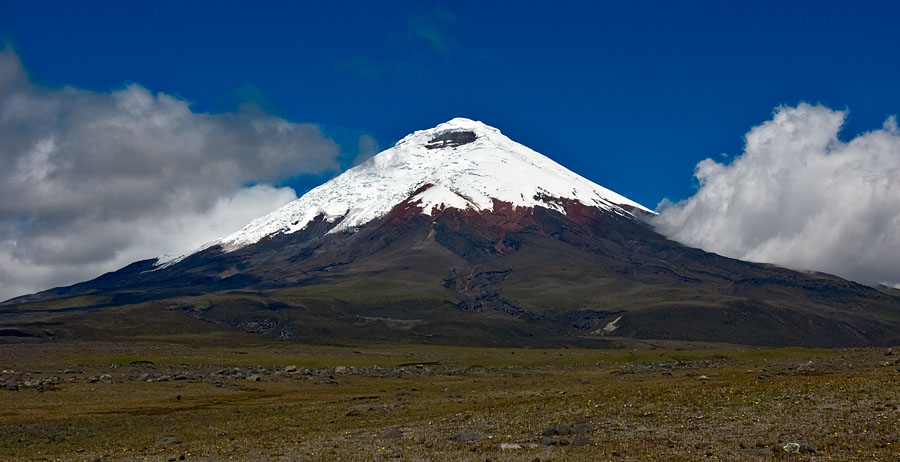Cotopaxi

Nestled within the captivating landscapes of Ecuador, Cotopaxi stands as a testament to the raw power and breathtaking beauty of nature. This stratovolcano, with its perfectly symmetrical cone, has become an iconic symbol of Ecuador and a must-visit destination for adventurers and nature enthusiasts alike. However, beyond its awe-inspiring presence, Cotopaxi holds a rich tapestry of history, cultural significance, and environmental importance.
Table of Contents
ToggleThe Geological Marvel
Cotopaxi is the second-highest summit in Ecuador, soaring to an impressive 19,347 feet (5,897 meters) above sea level. It is part of the Pacific Ring of Fire, a region known for its seismic and volcanic activity. Despite its potential for destruction, Cotopaxi’s perfect cone and glaciated peak make it a stunning natural wonder. The volcano’s last significant eruption occurred in 2015, creating a sense of urgency to explore and appreciate its beauty while respecting its potential for activity.
Cultural and Historical Significance
For the indigenous peoples of Ecuador, including the Quechua-speaking communities, Cotopaxi holds deep cultural and spiritual importance. It is often considered a sacred mountain, revered for its association with powerful deities in Andean mythology. The volcano’s influence extends to local traditions, folklore, and religious practices, making it an integral part of the cultural fabric of the region.
Adventure Awaits
Cotopaxi National Park, surrounding the volcano, offers a playground for outdoor enthusiasts. Hiking and trekking trails wind through the park, providing opportunities to witness diverse ecosystems, from high-altitude paramo to lush forests. Climbers, drawn to the challenge of conquering Cotopaxi’s summit, embark on thrilling expeditions, navigating ice and rock to reach the top. The rewards are not only the panoramic views but also the sense of accomplishment that comes with conquering one of the world’s highest active volcanoes.
Conservation Efforts
Preserving Cotopaxi‘s pristine environment is crucial, given its ecological significance. The national park serves as a refuge for unique flora and fauna adapted to the harsh high-altitude conditions. Conservation efforts focus on maintaining the delicate balance of this ecosystem while promoting sustainable tourism. Visitors are encouraged to practice responsible tourism, respecting designated trails and guidelines to minimize their impact on the fragile environment.
Beyond Cotopaxi
While Cotopaxi is undoubtedly a highlight of Ecuador, the country offers a diverse array of experiences. Explore the historic streets of Quito, a UNESCO World Heritage site, or venture into the Amazon Rainforest for a completely different ecological adventure. The Galápagos Islands, with their unique wildlife, provide another captivating destination for nature lovers. Ecuador’s rich cultural heritage, vibrant markets, and warm hospitality make it a multifaceted destination that goes beyond the allure of its majestic volcano.
Conclusion
Cotopaxi’s towering presence on the Ecuadorian landscape is more than a geological marvel – it is a cultural touchstone, an adventurer’s playground, and a symbol of the delicate balance between nature and human interaction. Whether you seek the thrill of climbing its slopes, exploring its surrounding national park, or delving into the cultural tapestry it represents, Cotopaxi invites you to discover the magic that lies within its icy peaks and the diverse wonders of Ecuador that extend far beyond its majestic volcano.





